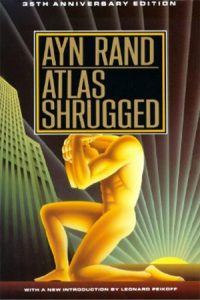
 Literature Guides
Literature Guides
Study Guide of Ayn Rand’s Atlas Shrugged
Introduction
Published in 1957, Atlas Shrugged is Ayn Rand’s fourth and final novel. It is also her longest. The book combines elements of romance, science fiction, and mystery. The novel is the most extensive fictionalized expression of her philosophy of “objectivism.”
Atlas Shrugged tells the story of a dystopian future in which business and innovation are hampered by the burdensome government policies which encourage collectivization. The action centers on Dagny, an intelligent and shrewd woman in the world of business who is struggling to hold her company together in the face of these government policies and a mysterious drain of the best minds in the nation. Those who collectivize the innovations and success of businesses are called looters.
In the course of events, Dagny and others discover the hero, John Galt. He is the inventor of a special electric motor which runs on static electricity, but more importantly, he is the leader of the group of great minds who have deliberately dropped out of society to stage a strike against the looters.
The book explores ideas such as the centrality of the mind to human progress. This basic theme is at the heart of Rand’s particular ideas of objectivism. This view is conceived in response to Marxist ideas which depend on the observation of real historical facts. Rather than the work of people in the world, Rand would like to believe that human history and progress is fueled by the work of a few gifted individuals who apply reason to problems in order to provide an inevitable benefit to humanity.
Though the book remains influential, it has been almost universally considered a childish and even mean-spirited vision of humanity, one which valorizes selfishness and refuses to acknowledge real historical facts.



